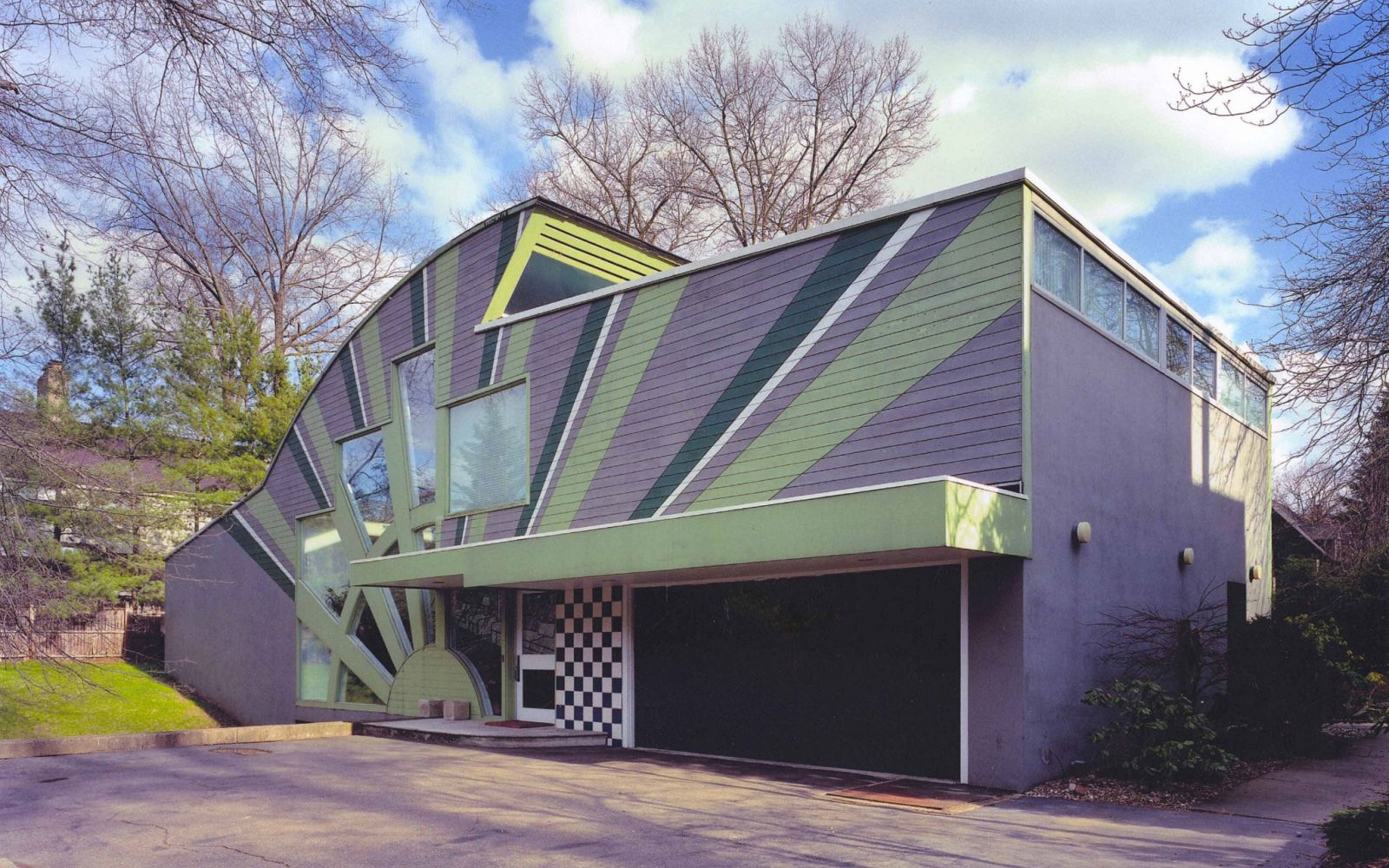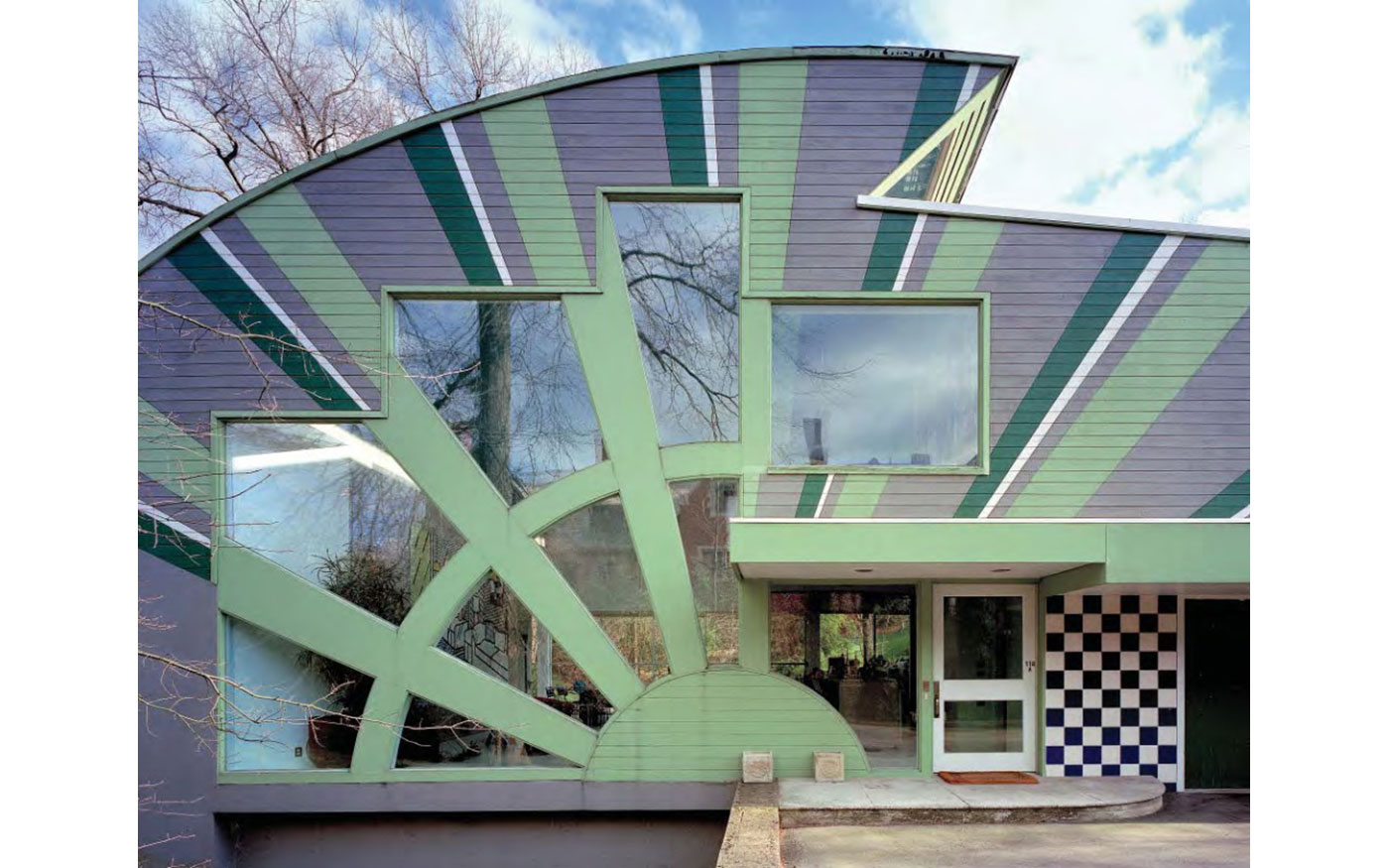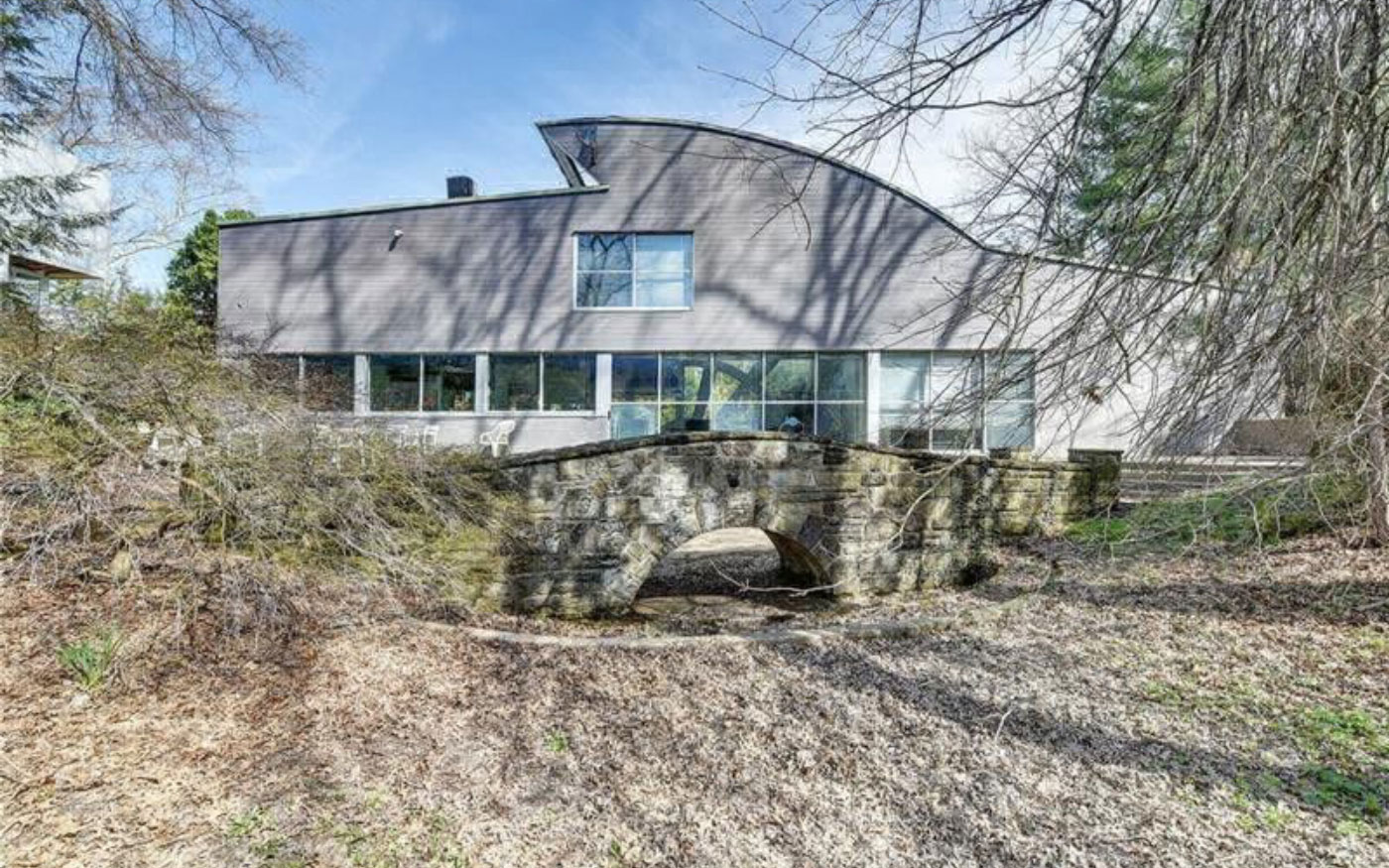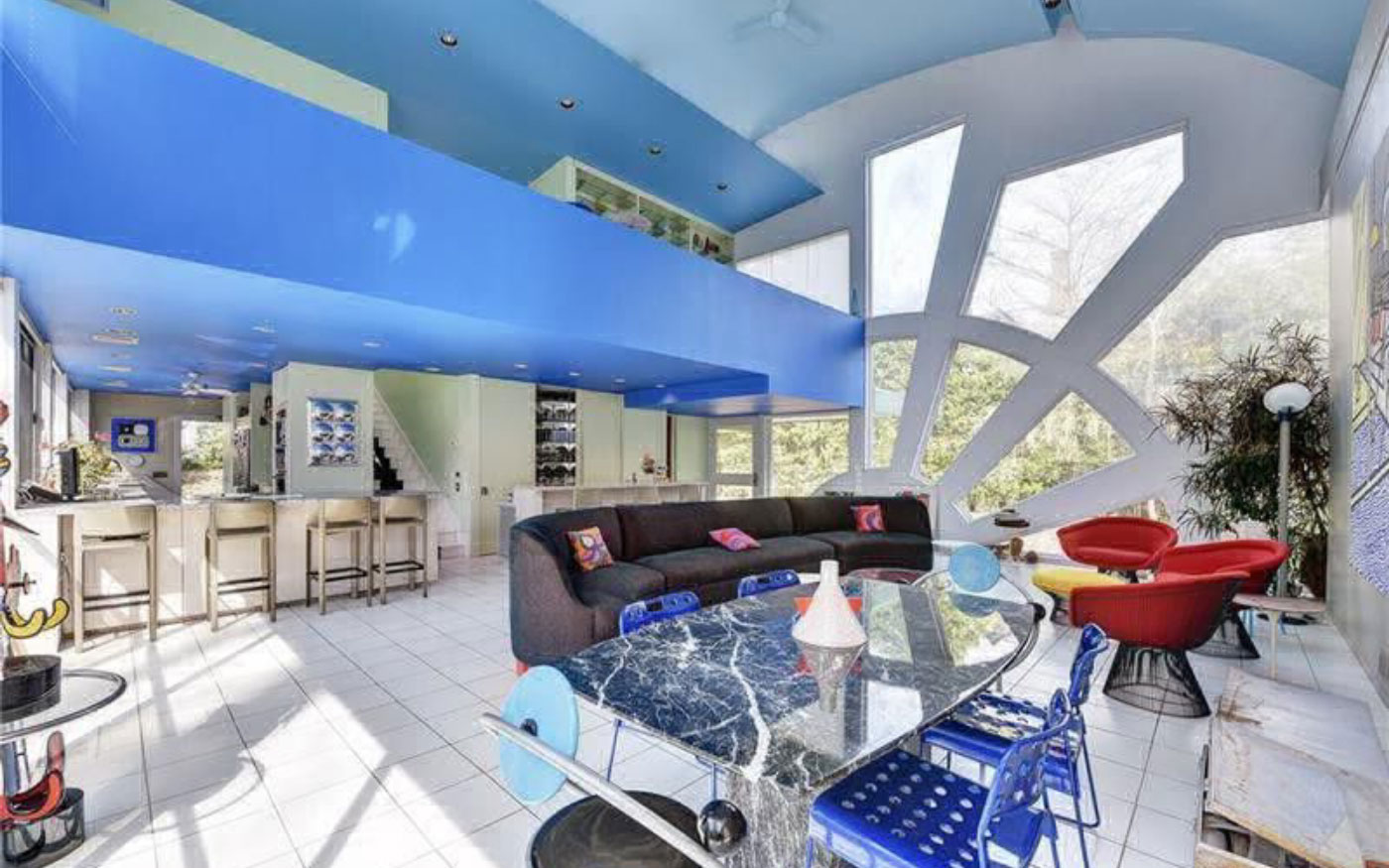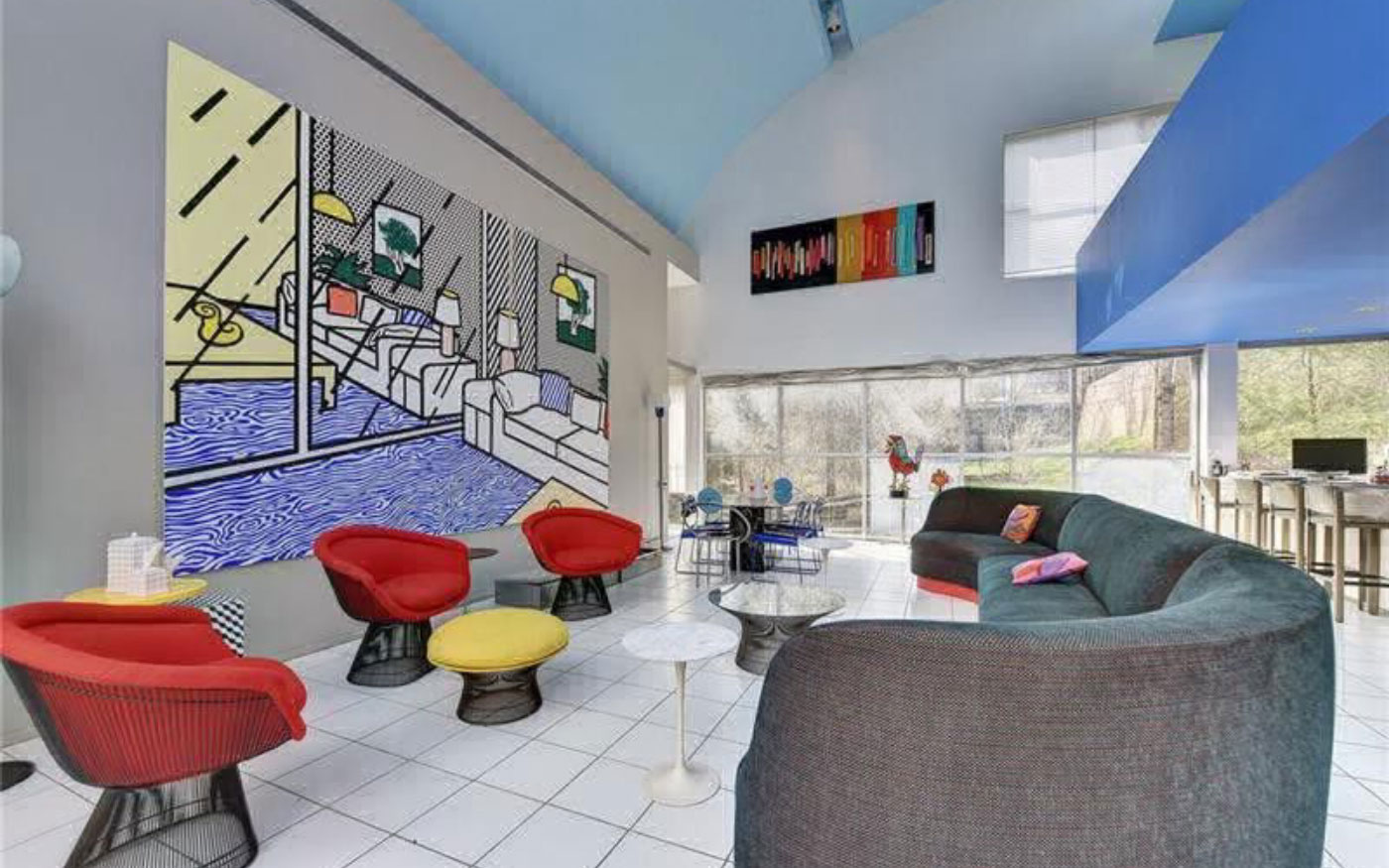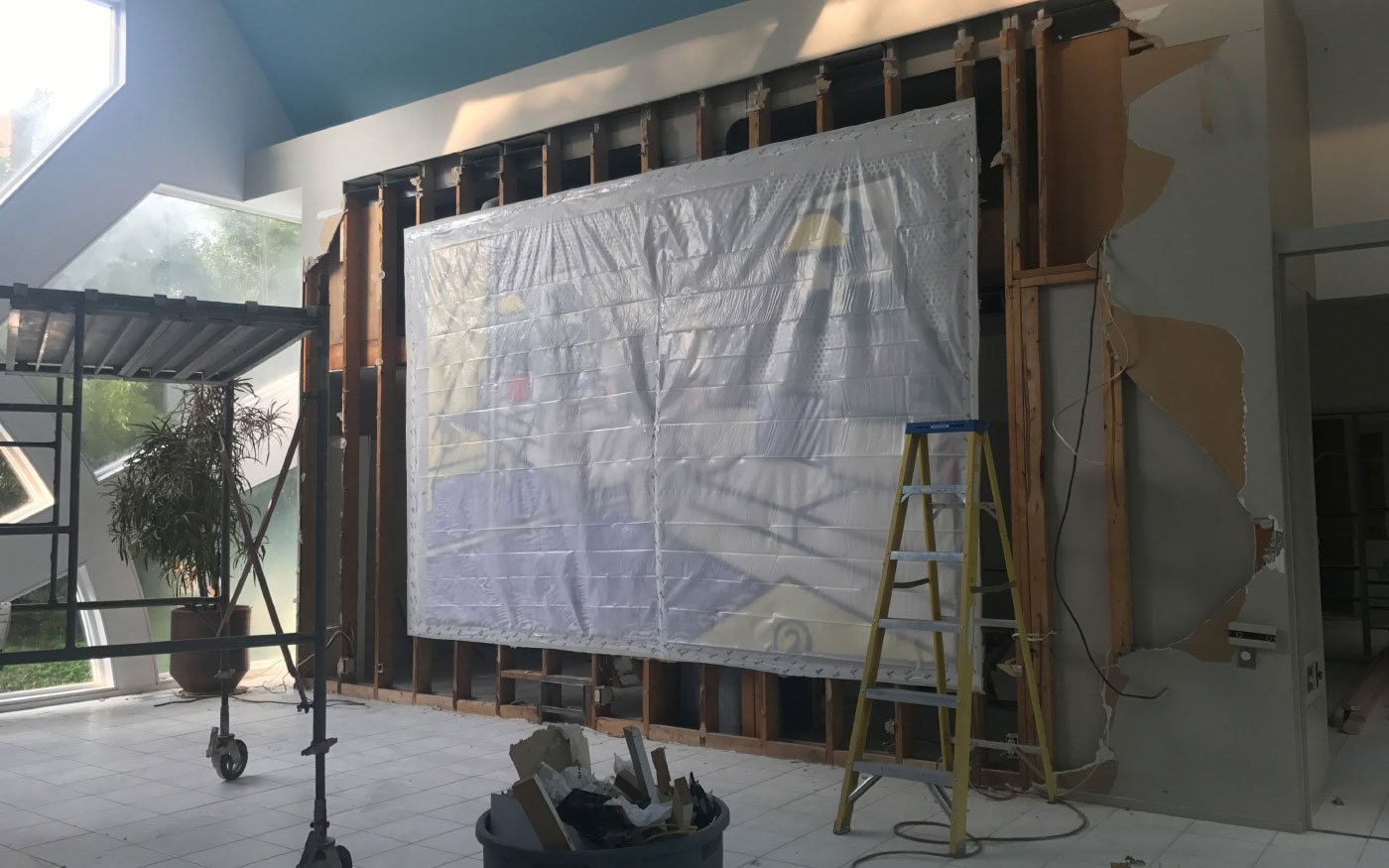Abrams House
Architects: Robert Venturi and Denise Scott Brown
Year of completion: 1992
Location: Pittsburgh, MA, USA
Razed in November 2022
Latest update 20 March 2024
Abrams House
Betty and Irving Abrams commissioned Denise Scott Brown and Robert Venturi to build their dream retirement home on Woodland Road in the affluent Pittsburgh neighbourhood Squirrel Hill in 1979, after acquiring the back end of a subdivided parcel of land. As a younger woman, Betty Abrams had visited another Squirrel Hill house, Walter Gropius and Marcel Breuer’s Frank House (1942) and been inspired to one day build her own modern home with open floor plan. Completed in 1982, the resulting house is a highly personal and eccentric postmodern expression of the Abrams’ desires and needs.
Money acquired from the Abrams’ land sale helped Frank A. Giovannitti finance the building of a Richard Meier-designed house on the remaining parcel of land in 1983. Meier and Venturi are/were leading post-modern architects, which lends a certain compatibility to the two houses in terms of style and status. The Abrams house on its own does of course have unique design features, in no small part to because of the collaborative input of Betty Abrams. However, what is truly interesting is the larger surrounding situation on Woodland Road which includes not only the Meier structure, but also the Frank House and an A. James Speyer-designed house from 1953. Essentially there is a modern pair of houses on one end and as a counterpoint, a post-modern pair on the other. That Robert Venturi was an outspoken critic of Modernism adds a richness to the history of the place as a whole. The loss of any of the four structures would alter that narrative.
Latest News
Popular Pittsburgh, 29 April 2019
The Uncertain Fate of The Abrams House
Architectural highlights
The grey house with multi-hued radiating green stripes features an arched roofline that breaks midway through its curve and returns to a flat profile, creating an angled clerestory window that lights a dramatic twenty-foot high living space.Rectilinear windows jockey for position among arches and curves. It’s a brainy rumination on sun, landscape, and the adjacent bridge. Venturi and Scott Brown’s work is always provocative, but the old joke is that their most interesting buildings are the ugliest.
Fate
An agreement minted between Betty Abrams and the Pittsburgh History and Landmarks Foundation placed a landmark easement on the house, guaranteeing its sale to a preservation-minded buyer, who would then provide an annuity to Abrams’ children. A low appraisal of the house after Betty Abrams’s death in 2018 caused the deal to collapse, and the Abrams’ children sold it by right to the owners of the property next door. The house was nominated for landmark status by the Pittsburgh History and Landmarks Foundation, but the nomination was rejected by Pittsburgh City Council. Demolition loomed for the Abrams House for four years until it was razed late in 2022. The text of the landmarks designation notes the significance of the “first Postmodern building in Pittsburgh” but attributes its design solely to Robert Venturi, not mentioning the firm name or Denise Scott Brown. (Source: article Threatened, Altered, and Demolished: Venturi, Scott Brown and Associates’ Built Work at Risk by Elizabeth Blasius on MasContext)
News Archive
Curbed, 25 March 2019
Venturi Scott Brown-designed Abrams House faces demolition
Abrams House
Robert Venturi and Denise Scott Brown
1979, USA
